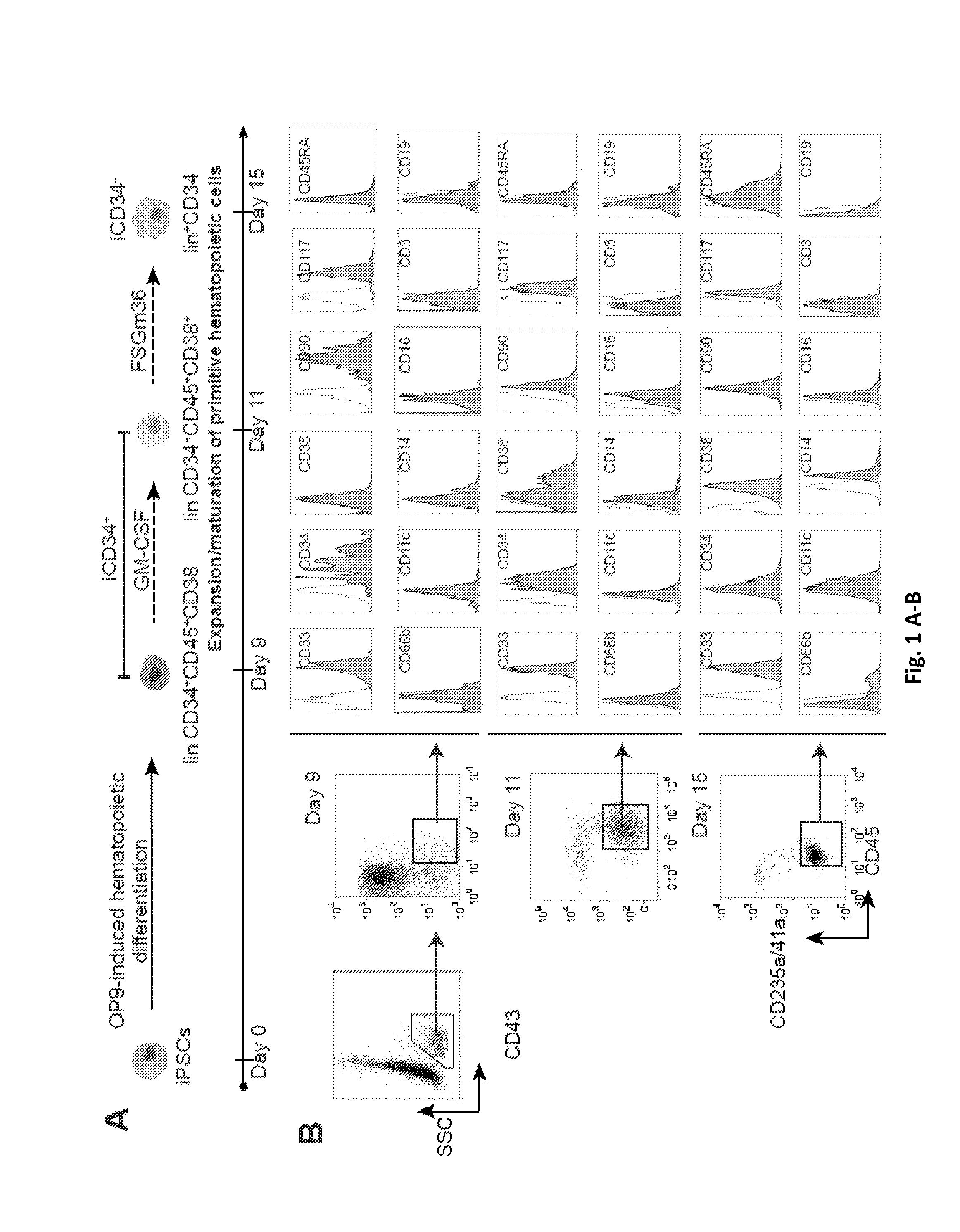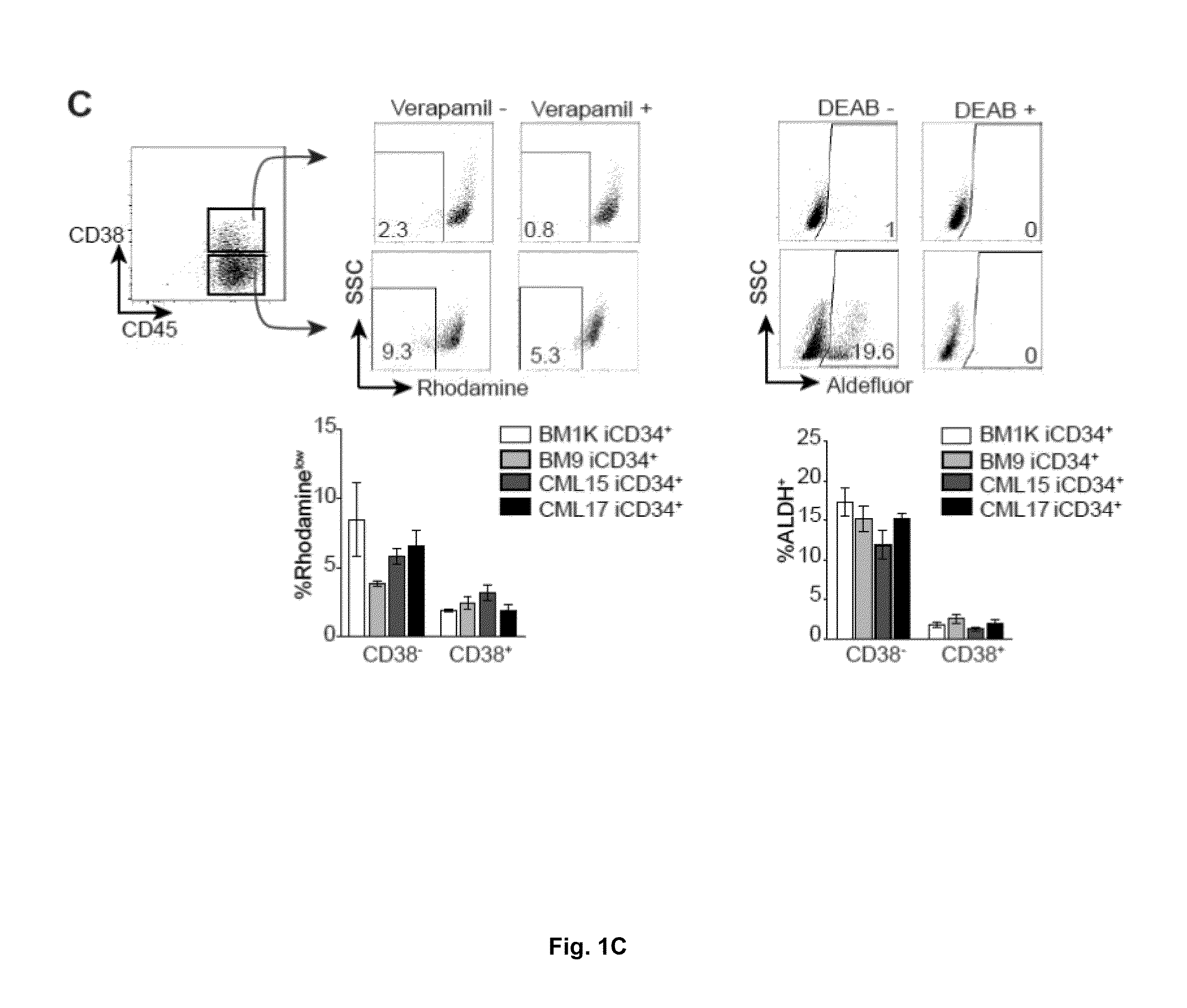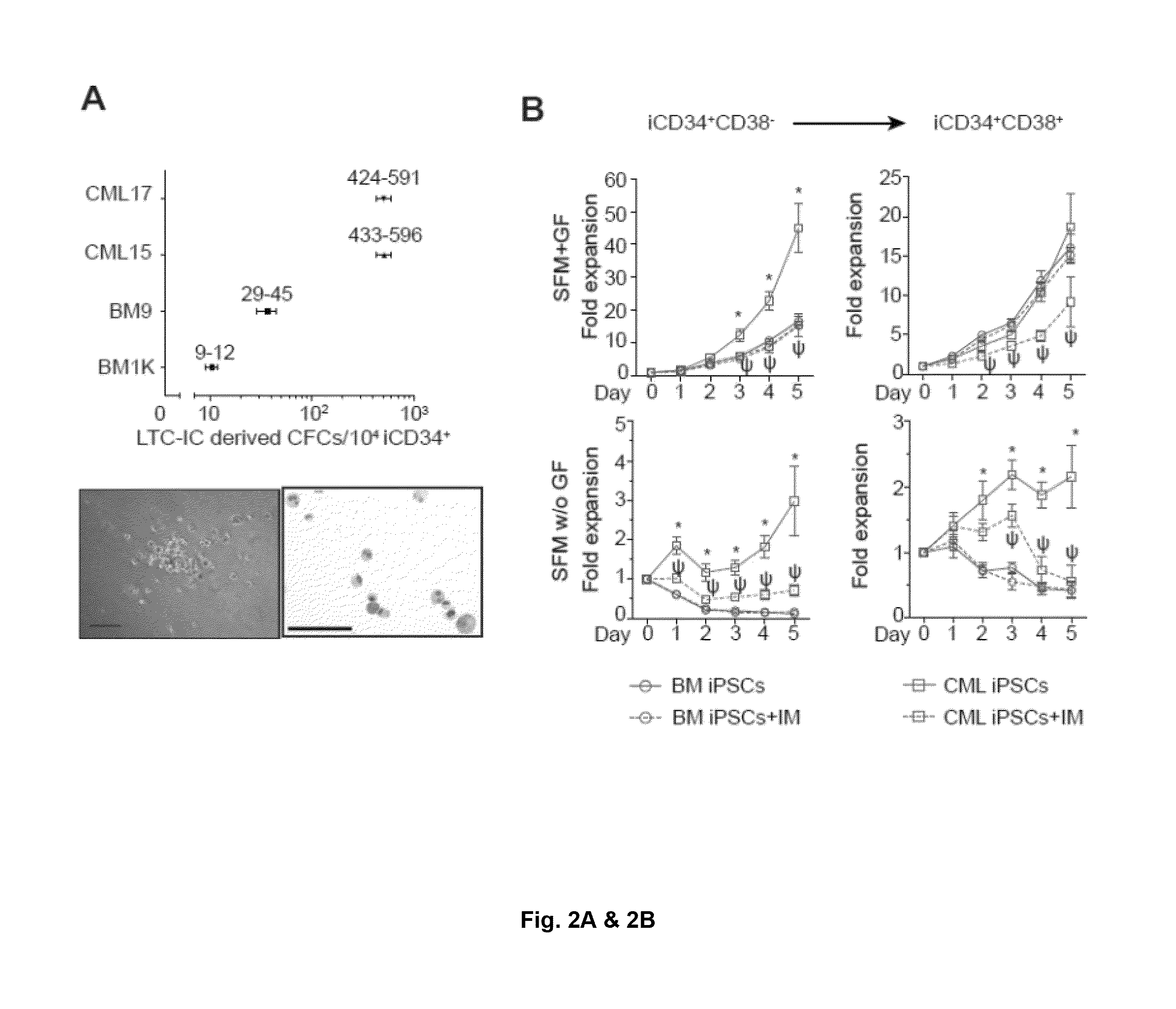Induced pluripotent stem cell model of chronic myeloid leukemia revealed olfactomedin 4 as a novel therapeutic target in leukemia stem cells
a technology of stem cells and leukemia, which is applied in the field of induced pluripotent stem cell models can solve the problems that the rarity of lscs within the pool of malignant cells remains a major limitation factor for human study, and achieve the effect of treating and reducing the therapeutic resistance of chronic myeloid leukemia
- Summary
- Abstract
- Description
- Claims
- Application Information
AI Technical Summary
Benefits of technology
Problems solved by technology
Method used
Image
Examples
example 1
Generation of Leukemia Stem Cell (LSC)-Like Cells from CM-hiPSCs
[0130]Recently we generated transgene-free iPSCs from the bone marrow mononuclear cells of patient in the chronic phase of CML (CML15 iPSCs and CML17 iPSCs) and showed that these iPSCs capture the entire genome of neoplastic cells, including the unique 4-way translocation between chromosomes 1, 9, 22, and 11 that was present in the patient bone marrow (BM) (Hu et al., 2011). Sequencing analysis revealed that BCR-ABL translocation in these CML-iPSCs is associated with p210 isoform with typical b3a2 rearrangement without any mutation in the kinase domain consistent with observed sensitivity of parental bone marrow cells to imatinib (FIG. 7A-C). CML LSCs have been identified within the most primitive hematopoietic compartment as cells with long-term culture initiating cell (LTC-IC) or in vivo repopulating activities (Corbin et al., 2011; Li et al., 2012; Petzer et al., 1996; Sloma et al., 2010; Udomsakdi et al., 1992b). Si...
example 2
Induced LSC-Like Cells are Resistant to BCR-Abl Inhibition by Imatinib
[0150]The dependence of CML cells on BCR-ABL signaling enable the suppression of the disease by TKIs and the long-term survival of the patients. However, resistances of CML LSCs to imatinib preclude a complete cure of CML (Bhatia et al., 2000; Corbin et al., 2011; Jiang et al., 1999; Verfaillie et al., 1992). Analysis of BCR-ABL expression by PCR and western blot demonstrated that BCR-ABL mRNA and protein were present in undifferentiated iPSCs and their iCD34+ and iCD34− progeny (FIG. 3A and FIG. 8C). Evaluation of the phosphorylation status of the BCR-ABL-specific substrate CRK-like protein (CRKL) revealed the expression of a phosphorylated form of CRKL (p-CRKL) in CML but not in the control BM iCD34+ and iCD34− cells (FIG. 3B), providing evidence that BCR-ABL is active in CML iPSC-derived hematopoietic progeny. After treatment with imatinib, p-CRKL dramatically decreased in both primitive iCD34+ and in more matu...
example 3
Identification of Olfactomedin 4 as a Novel Drug Target in LSC-Like Cells
[0152]To find out whether iPSC-derived primitive CML hematopoietic cells can be used to discover novel drug targets, we performed molecular profiling of CML and control BM iCD34+ cells treated or non-treated with imatinib. Similar to findings in somatic CML CD34+ cells (Bruns et al., 2009; Diaz-Blanco et al., 2007), untreated CML iCD34+ showed significant differences in expression of genes regulating cell adhesion and chemotaxis, proliferation, programmed cell death and fatty acid metabolism as compared to controls (FIG. 8A), including upregulation of genes associated with cancer development such as BCL2, CDK6, PRKCQ, MYCN, TP53RK, and RASGRP3 and downregulation of adhesion molecules ICAM1, ICAM3, ITGB2 and ITGB7 (FIG. 8B and Appendix). After treatment with 5 μM imatinib, the molecular profile of CML iCD34+ cells became more similar to control BM iCD34+ cells, consistent with the critical role of BCR-ABL signal...
PUM
| Property | Measurement | Unit |
|---|---|---|
| molecular weight | aaaaa | aaaaa |
| concentration | aaaaa | aaaaa |
| drug resistance | aaaaa | aaaaa |
Abstract
Description
Claims
Application Information
 Login to View More
Login to View More - R&D
- Intellectual Property
- Life Sciences
- Materials
- Tech Scout
- Unparalleled Data Quality
- Higher Quality Content
- 60% Fewer Hallucinations
Browse by: Latest US Patents, China's latest patents, Technical Efficacy Thesaurus, Application Domain, Technology Topic, Popular Technical Reports.
© 2025 PatSnap. All rights reserved.Legal|Privacy policy|Modern Slavery Act Transparency Statement|Sitemap|About US| Contact US: help@patsnap.com



